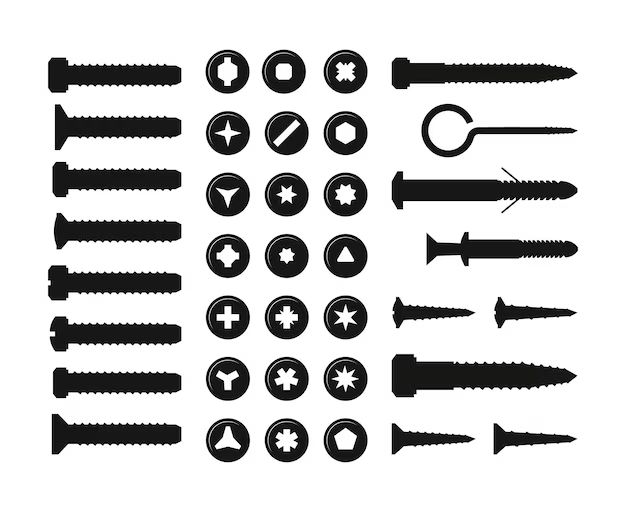When installing a new interior door frame, choosing the right screws is an important decision that will ensure the door frame is securely fastened and stable for years to come. There are a few key factors to consider when selecting door frame screws:
Page Contents
Screw Type
The most common and recommended type of screw for installing door frames is a wood screw. Wood screws are specially designed to grip and hold well in wood. They have a tapered shape and come to a sharp point, allowing them to bore into the wood material and create a strong holding connection. The spiral threads along the shaft of the screw provide extra gripping power. Make sure to select screws that are long enough to penetrate through the door frame and at least 1 inch into the wall studs or framing behind the jamb. Screws that are around 3 inches long are usually sufficient.
Screw Head
There are a few common screw head types to choose from:
- Flat head – These lie flush against the surface of the door frame for an inconspicuous look.
- Oval head – Oval heads are also relatively flat but provide more surface area to cover holes and create a tight seal.
- Bugle head – A domed bugle head stands out from the surface and can hide any gaps around the screw head.
- Trim head – Trim heads are low profile with a small flat top and rounded edges.
Trim head and bugle head screws often provide the best balance of an attractive finish with strong holding power. Make sure the screw head is not oversized and will countersink flush into the door frame material.
Screw Material
Wood screws are available in different materials:
- Steel – The most common option. Provides good strength at an affordable price.
- Stainless steel – More corrosion resistant for damp areas but more expensive.
- Brass – Attractive finish but lower strength.
- Coated steel – Steel screws with coatings for additional corrosion resistance.
For most standard interior door frames, steel wood screws are ideal. Stainless steel or coated screws provide extra protection for bathroom door frames or other locations that may get wet at times.
Screw Size
The shank diameter and length are important screw size factors to select appropriately:
- Shank Diameter – #6, #8, or #10 size wood screws are common choices. Use a screw diameter just slightly smaller than the thickness of the door frame material to allow threads to bite but avoid cracking the frame.
- Length – As mentioned above, choose 3 inch screws or slightly longer to penetrate through the door jamb and deep into the wall studs.
A #8 x 3 inch wood screw is a standard size that works for most interior door frame applications. Adjust the length based on the thickness of the wall framing.
Pilot Holes
Drilling small pilot holes before driving the screws is highly recommended. Pilot holes prevent the wood from splitting and allow the screws to turn more easily into the material. Use a drill bit slightly narrower than the screw shank. A 7/64-inch pilot hole works well for #8 wood screws.
Quantity of Screws
For a typical interior door frame, use at least 8-10 screws total – 3-4 along each vertical door jamb and 2-3 along the top header. Space the screws evenly up and down the door frame on both sides. Using an adequate number of fasteners will deliver maximum holding strength and prevent the frame from shifting or sagging over time.
Screw Placement
Position the screws going into the wall framing or studs behind the frame, not just into the frame itself. Most door frames have pre-drilled installation holes – if so, use these to locate your screws. Make sure they align with wall studs, using a stud finder to check if needed. Stagger the screw placement on each side of the frame for best results.
Pre-Drilling Door Frames
For added stability, you can pre-drill clearance holes through the door frame itself. Use a drill bit slightly wider than the screw shank – a 9/64-inch bit for #8 screws. This allows the frame to shift less as the screws are tightened. Take care not to oversize the holes in the frame material itself.
Screwdriver Type
A quality screwdriver is essential to avoid stripping screw heads or camming out. For installing door frames, a 4-6 inch screwdriver with a magnetic tip helps grab and drive the screws while providing ample torque. Using a powered drill driver on a low setting also makes driving screws easier, but take care not overtighten.
Conclusion
Installing door frames securely requires using the right fasteners. Quality wood screws approximately 3 inches long that suit the door frame material thickness, along with pre-drilling pilot holes, will allow you to fasten frames solidly in place. Strategically placing at least 8-10 screws that penetrate into the wall studs will keep the door frame tightly anchored for lasting performance. Taking the time to select and properly install the right screws for door frames is worth the effort.
